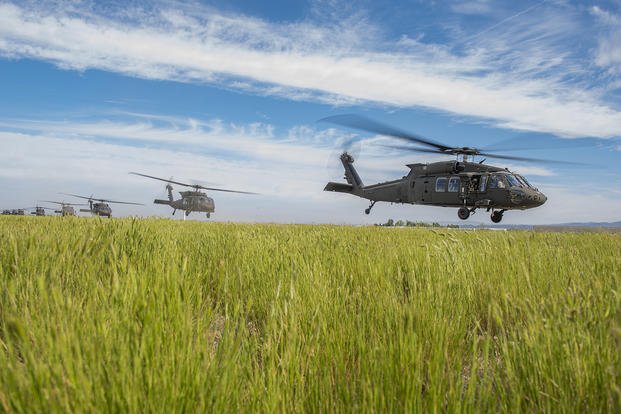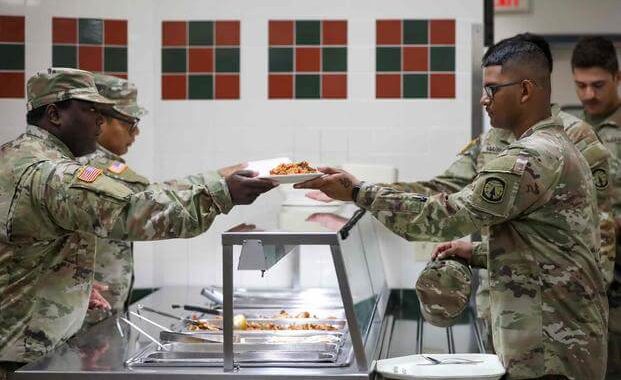Army Pilots Are Flying Way Less, as Fatal Incidents Pile Up
3 min read
The Idaho National Guard’s 1st of the 183rd Aviation Regiment conducted Operation Infinite Crisis training.
Army helicopter pilots are flying significantly less than they were a decade ago, according to data reviewed by Military.com, as the service grapples with a string of recent deadly incidents.
Since 2012, flight hours across the Army’s top three helicopter platforms have dipped dramatically. Flight time with the Apache has dropped about 50%; Chinook pilots have 36% less time in the air; and the Black Hawk, the service’s premier workhorse, is flying 25% less.
Much of that dip in flight time is attributable to the Global War on Terror winding down, with combat operations slowing down and a commensurate dip in training time. The Army did not provide an aviation expert or senior leader in that field for an on-the-record interview for this story.
But that decline has coincided with a surge in recent deadly helicopter accidents.
Last month, Gen. James McConville, the Army’s top officer, ordered a safety stand-down following back-to-back high-profile helicopter crashes: one involving two Black Hawks that killed nine 101st Airborne Division troops and another in Alaska in which two soldiers were killed and a third injured when two AH-64 Apaches collided. Aviation units were tasked with reviewing maintenance of their crafts and going over safety procedures.
The crash in March involving the 101st Airborne was one of the deadliest non-combat incidents in the Army’s history and, while it’s unclear what caused it, it is one of many fatal helicopter crashes outside of a war zone in the past decade leading to new scrutiny on whether the service’s helicopters are safe and its pilot training adequate.
“If we have known issues with certain helicopters, we need to know so we can resource your Department in a manner that protects the lives of our brave women and men in uniform,” Sen. Kirsten Gillibrand, D-N.Y., wrote in a letter to Defense Secretary Lloyd Austin earlier this month. The letter requested further info on recent issues with helicopters, including total figures for incidents and whether there were any common themes to the causes.
Army officials have said that they don’t see a connection between flight hours and accidents.
“The overall reduction in rotary-wing flying hours executed over the past decade is directly attributable to the drawdown in overseas contingency operations executed in Iraq and Afghanistan during that period,” Jason Waggoner, a service spokesperson, said in a statement to Military.com. “The Army has not identified any correlation between flight hours and accidents. The Army’s manned aviation accident rate steadily declined over the past decade as flight hours executed also declined.”
The Army National Guard also has had a large number of incidents over the past decade, with 45 serious crashes killing 28 Guardsmen, according to an April report from the Government Accountability Office. In addition to missions overseas in Europe, Africa and the Middle East, the Guard also heavily uses helicopters on domestic missions in disaster relief and search and rescue, which governors have increasingly relied on.
Amongst other incidents, two Tennessee National Guard soldiers died in a Black Hawk crash in February; a 2021 Black Hawk crash killed three New York Guardsmen; and a 2015 Black Hawk crash killed four Lousiana Guard soldiers and seven Marines.
The report found significant issues in the National Guard, particularly a lack of flight hours among its pilots, who need a minimum of 6.77 hours a month, with nine hours being considered optimal. Between 2017 and 2019, the bulk of Guard pilots flew around five hours per month.
The service is still compiling findings for its aviation stand-down, which ended May 5 for active-duty units and is still in effect for the National Guard until the end of the month. The stand-down grounded aircraft until the units completed maintenance and safety reviews.





